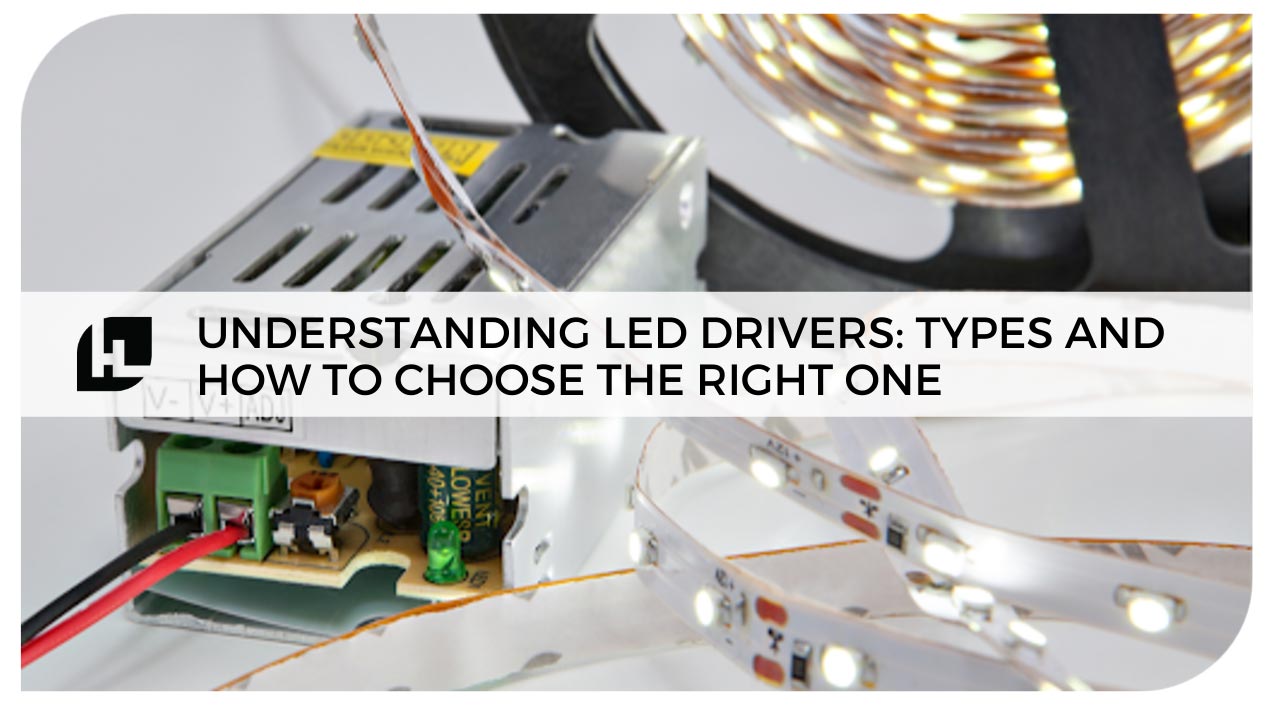LED dimmable drivers are needed to control the flow of electricity into the LED. This is to increase or decrease the amount of electrical current flowing into the LED, thereby controlling its brightness.
LEDs have the ability to shine very brightly while producing minimal heat. This is in part due to its technology where electric charge is directly converted into light, via the use of a semiconductor die.
With LEDs, low-voltage electricity flows in one direction passing through a semiconductor die in which process produces light as its by product. . This is a great advantage in terms of saving energy and sustainability, which results in LEDs having a long lifespan and generating little heat.
However, because of this design, the amount of electricity flowing into the LED cannot be easily regulated, and the brightness of LEDs can’t be controlled in the LED itself.
Types of LED Drivers
There are two main types of LED drivers available based on mechanism, the constant current, and constant voltage.
Constant current LED drivers maintain a continuous flow of electrical current into the LED by varying the voltage. Such drivers include ratings in milliamps (mA) or amps (A) and are always wired in series.
Meanwhile, constant voltage LED drivers alter the current to maintain a steady voltage. They are rated in voltage (V) or direct current (DC) and are wired in parallel. When considering which type of LED driver to get, a constant current is preferable to avoid LED burnout. They’re also easier for application control and can create more consistent brightness.
But constant current drivers can be costly. In comparison, constant voltage drivers, with their more familiar technology, are not only more affordable but are typically easier to design and install for engineers. If you require a lot of lighting for your project, using constant voltage LED drivers may be more practical.
Additionally, not all LED drivers are capable of dimming light. In this respect, there are two main types of LED drivers according to their function, dimmable drivers and non-dimmable drivers.
Dimmable LED drivers utilize PWM, CCR, or similar technology to shorten the amount of electric current flowing into the LED. This is done either through pulse width modulation where the amount of leading current going through the LED is shortened or through amplitude modulation where the power of the electric current flowing into the LED is reduced.
Meanwhile, non-dimmable drivers are derated. However, they are not compatible with dimmer switches. Dimming LED lights with a non-dimmable driver may cause flickering, flashing, or may even cause damage.
Though non-dimmable drivers have the advantage of being more affordable, dimmable LED drivers provide more versatility. Plus, you can save on energy consumption by dimming your lighting at will.
Choosing the Right LED Driver
Though bright lighting is great, there’s a time and place for everything. Enjoy your space by controlling your light output with LED dimmable drivers.
Go to HitLights and check out LED dimmable drivers. They’re compatible with TRIAC wall plates and power supplies, so you can have just the right lighting for your project!
To learn more, contact our team of LED experts at HitLights today!

